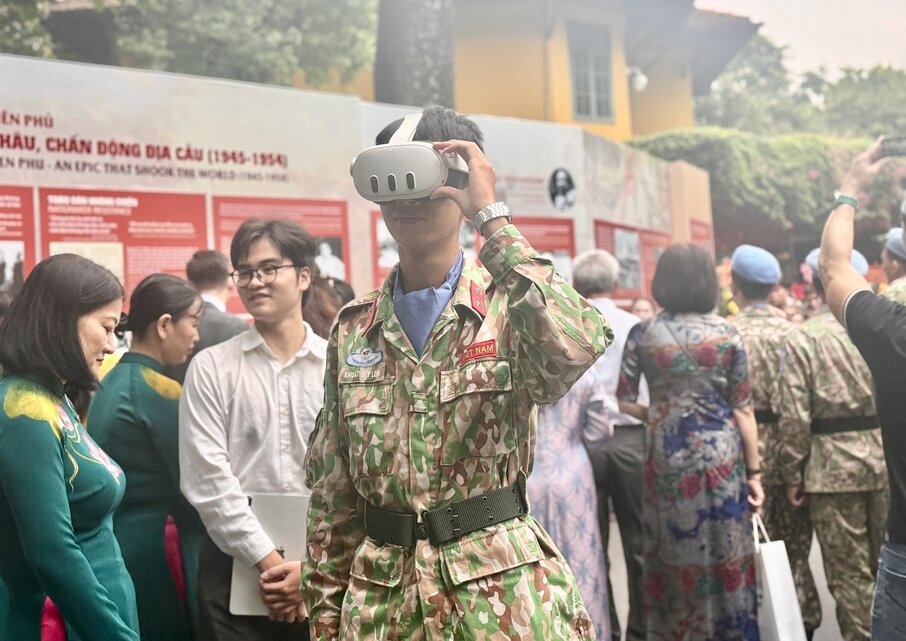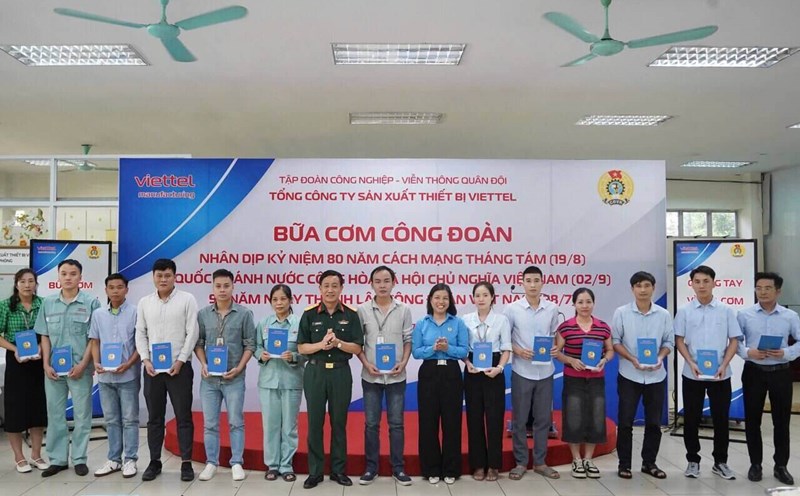This is the first time that AR technology applying spatial computing has been deployed at important historical sites, opening a completely new way of sightseeing - harmoniously combining traditional values and modern technology.
The entire 2nd floor area of the Vietnam Revolutionary Museum has been digitized with high accuracy, creating a platform to display vivid digital content right at the actual location: 3D model recreating the setting, characters, artifacts; documentary; interactive signs and instructions; automatic explanation according to each theme.
With the visual positioning technology using computer vision (Visual positioning system - VPS) developed by Viettel High-Tech Industry Corporation (Viettel High Tech), visitors just need to bring up their phone to be able to explore 3D models recreating history, documentary videos, signs, instructions, illustrative effects and explanations that automatically display accurately at each real location - bringing the feeling of history being revived right before their eyes.
At the thematic exhibition room, AR technology helps recreate the exciting atmosphere of the " gunless war" against illiteracy, bringing visitors from the roofs of communal houses and pagodas in 1945 to special classes in fields, river wharves...
This space becomes a fence opening in depth history, helping visitors access valuable stories and artifacts in an intuitive, vivid and personalized way.

This experience brings a form of "one campus - countless layers of content - no need for a tour guide", allowing visitors to freely explore, interact and receive information in a vivid, intuitive way without missing any important details. This is considered one of the new trends of smart tourism, especially attracting young people and international visitors.
Thanks to the ability to classify and position digital content accurately, Viettel High Tech's system allows the organization of many different topics or exhibitions in the same space at the same time, meeting the diverse needs of visitors and ensuring personalized experiences for each group or each person.

Previously, this solution was introduced for experience at the Presidential Palace Relic Site with more than 40,000 m2 digitized with high-precision virtual space data.
The application of Viettel High Tech's spatial computing technology to locations and national relics is especially not only a breakthrough sightseeing experience, but also contributes to preserving, honoring and spreading historical values through digital technology language. This is an important step forward, opening up prospects for applying AR in culture, education, tourism and heritage conservation.











